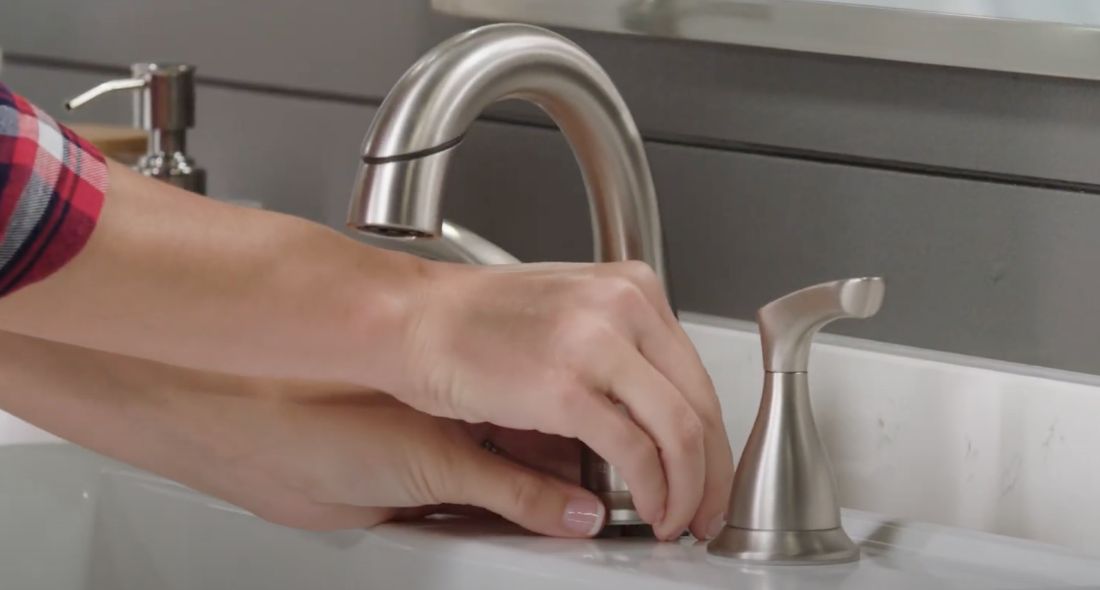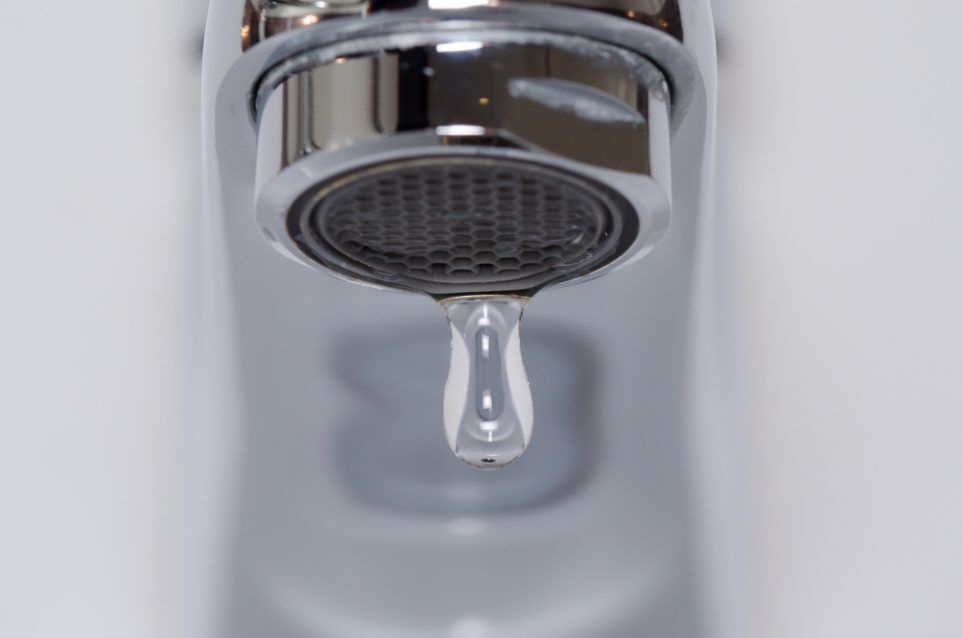The article on the next paragraphs on the subject of Leaky Faucets: Why They Happen & What to Do About Them is fairly insightful. You should check this stuff out.

Dripping taps may seem like a small aggravation, yet their effect exceeds just the nuisance of the sound. From wasting water to incurring unneeded economic expenses and health risks, neglecting a leaking faucet can bring about various repercussions. In this article, we'll look into why it's important to resolve this usual family concern promptly and properly.
Wastage of Water
Environmental Effect
Leaking faucets add substantially to water wastage. According to the Epa (EPA), a solitary faucet dripping at one drip per secondly can throw away more than 3,000 gallons of water each year. This not only pressures water sources however also affects environments and wildlife dependent on them.
Step-by-Step Guide to Dealing With a Dripping Tap
Devices Called for
Prior to attempting to take care of a dripping faucet, gather the essential tools, consisting of an adjustable wrench, screwdrivers, substitute parts (such as washers or cartridges), and plumber's tape.
Common Faucet Issues and Their Solutions
Identify the kind of tap and the particular concern creating the drip. Typical problems include worn-out washers, rusty shutoff seats, or defective O-rings. Refer to supplier instructions or online tutorials for detailed guidance on repair services.
Financial Costs
Enhanced Water Costs
Beyond the ecological impact, leaking taps can pump up water expenses substantially. The collected waste with time translates into greater utility costs, which could have been prevented with timely repairs.
Potential Building Damages
Furthermore, prolonged leaking can result in damage to fixtures and surface areas bordering the faucet. Water accumulation can cause staining, corrosion, and also architectural concerns if left neglected, causing additional repair service prices.
Health and wellness Issues
Mold And Mildew and Mildew Growth
The consistent visibility of moisture from a dripping faucet creates a perfect environment for mold and mildew growth. These fungi not just endanger indoor air quality yet additionally present health and wellness dangers, specifically for people with respiratory system problems or allergic reactions.
Waterborne Conditions
Stationary water in dripping taps can come to be a breeding place for bacteria and various other pathogens, raising the danger of waterborne diseases. Impurities such as Legionella bacteria thrive in stationary water, potentially bring about serious health problems when consumed or inhaled.
Do it yourself vs. Specialist Repair work
Advantages and disadvantages of Do It Yourself Repair
While some may attempt to take care of a leaking faucet themselves, do it yourself repair services come with their very own collection of obstacles. Without correct knowledge and tools, DIY attempts can worsen the problem or result in incomplete repair services, extending the problem.
Advantages of Employing a Specialist Plumber
Working with a specialist plumber makes certain that the underlying source of the trickling tap is dealt with properly. Plumbings possess the knowledge and tools to identify and fix faucet concerns effectively, saving time and minimizing the danger of further damages.
Ecological Responsibility
Specific Contribution to Preservation
Taking duty for fixing leaking taps straightens with broader initiatives towards water preservation and ecological sustainability. Every person's actions jointly make a considerable influence on preserving precious sources.
Sustainable Living Practices
By focusing on timely repair services and embracing water-saving practices, individuals add to sustainable living practices that profit both present and future generations.
Preventive Measures
Normal Maintenance Tips
To stop leaking taps, do routine upkeep such as cleaning aerators, evaluating for leaks, and changing worn-out components promptly. Furthermore, consider setting up water-saving tools or updating to a lot more reliable fixtures.
Value of Prompt Services
Attending to trickling taps as soon as they're discovered stops more water wastefulness and potential damage, ultimately saving both water and money in the long run.
Impact on Residential Property Worth
Assumption of Well-Maintained Building
Keeping a home in good condition, including addressing upkeep concerns like leaking faucets, boosts its regarded value and desirability among potential customers or renters.
Influence on Resale Worth
Residences with well-maintained plumbing components, including taps, command higher resale worths in the realty market. Addressing leaking taps can contribute to a favorable perception throughout residential or commercial property examinations and negotiations.
Final thought
Resolving a dripping faucet surpasses plain convenience; it's a necessary action towards conserving water, decreasing monetary expenses, and guarding wellness and residential or commercial property. Whether through do it yourself fixings or specialist aid, doing something about it to fix trickling taps is a tiny yet impactful method to promote responsible stewardship of sources and add to a much healthier, much more sustainable future.
How to Fix a Dripping or Leaky Faucet
A leaking faucet is one of the most common problems that homeowners encounter, but it being commonplace doesn’t make it any less annoying. The constant drip drip drip of a leaking bathtub faucet, showerhead, or sink tap can disturb your home’s serenity. Left neglected, a dripping faucet can also result in higher water bills and discoloration or mold growth in your sink or plumbing fixtures.
Fortunately, you don’t have to be a trained plumber to know how to stop a dripping faucet. With some basic tools, replacement parts, and a little patience, leaky faucet repair is a breeze. In this article, we’ll explain what causes dripping faucets and how you can fix them.
What Causes a Leaking Faucet?
Kitchen and bathroom faucets come in all manner of designs, but most involve some combination of valves, O-rings, seals, and washers. The O-ring is usually the weakest link, but any one of these pieces can wear down over time. Heat, moisture, temperature fluctuations, minerals, mold, and movement can contribute to warping and corrosion, breaking the watertight seal. This just comes with the territory of being a homeowner. Everything is always subject to wear and tear, and some component parts of your appliances and fixtures need to be replaced on occasion. At least replacement O-rings are cheap!
More rarely, dripping faucets can be a symptom of excessively high water pressure. Were this the case in your home, you would probably notice that the leak is not isolated to one faucet. Water pressure issues are harder to resolve on your own. We recommend contacting a professional plumber if you suspect your water pressure is too high.
How to Fix a Dripping Faucet
Pipe wrench or monkey wrench Allen wrench set Screwdrivers Old towel or rag Shut off the water.
Before you do anything, you need to turn off the water to keep from drenching your kitchen or bathroom. You should find a valve under the sink and against the wall. Once you’ve turned this valve, try turning the faucet on to confirm that the water source has been cut off.
If you can’t locate your local valve for the faucet you’re working on, you can always shut off the water to the house at the main valve. Of course, this will prohibit anyone from using the sinks, showers, or toilets while you’re working on the faucet that’s giving you trouble.
Plug or block the drain.
You’ll be disassembling the faucet and removing some small bits of hardware. Plug the drain with a stopper or rag to avoid the possibility of a small screw falling into your P-trap.
Take apart the faucet assembly.
There are several varieties of kitchen and bathroom faucets, each with its own manner of assembly. For detailed instructions on how to disassemble your faucet, you can refer to the fixture’s manual or contact the manufacturer. If you know whether you have a ball, disc, cartridge, or compression faucet, you can find detailed schematics online.
In general, you need to begin by removing the faucet handles. You might notice a small screw that you’ll need to remove with a screwdriver or Allen wrench. If you don’t see any visible securing hardware, it’s likely hidden under a decorative cap that can be unscrewed or popped off with flathead screwdriver.
Remove each piece methodically, consulting a schematic when necessary. Take notes or arrange the pieces in such a way to make it easier to correctly reassemble the faucet later.
Remove the cartridge.
Once you’ve removed the handles and securing hardware, you should be able to remove the valve cartridge or stem. Some cartridges will slide right out. Other faucet models will require you to loosen a nut with a pipe wrench before you can remove the valve stem.
Examine the exposed hardware.
With the cartridge or stem removed, inspect the component parts. Check the rubber O-rings for wear and tear. Also examine the seat washer for corrosion or other damage. These pieces are usually the responsible parties for a dripping faucet, but it’s worth inspecting the other component parts while you have the faucet disassembled.
Find replacement parts.
Once you’ve identified which faucet component has failed, find an identical replacement. Your local hardware store should have O-rings, seat washers, and other standard components in stock. If you have a luxury or uncommon faucet, you may have to contact the manufacturer for a replacement part.
It’s a good idea to take your old parts with you to the hardware store so you can compare them with the store’s inventory and be sure you’re purchasing the correct replacement.
Reassemble the faucet.
With your new parts in hand, reconstruct the faucet and handles. Don’t be tempted to overtighten screws or nuts. You might think this could create a better seal, but it can instead damage or bend a delicate part of the assembly and create a new problem for you.
Turn on the water and test the faucet.
The only thing left to do is test your work. Unplug the sink, turn the water back on, and try the faucet. Congratulate yourself on a job well done!
https://www.libertyhomeguard.com/how-to-fix-a-dripping-or-leaky-faucet/

Do you really like more info about Why It's Important to Fix Leaky Faucets? Write a remark below. We will be pleased to hear your responses about this write-up. Hoping that you visit us again in the near future. I beg you take the time to distribute this blog posting if you appreciated it. I take joy in your readership.